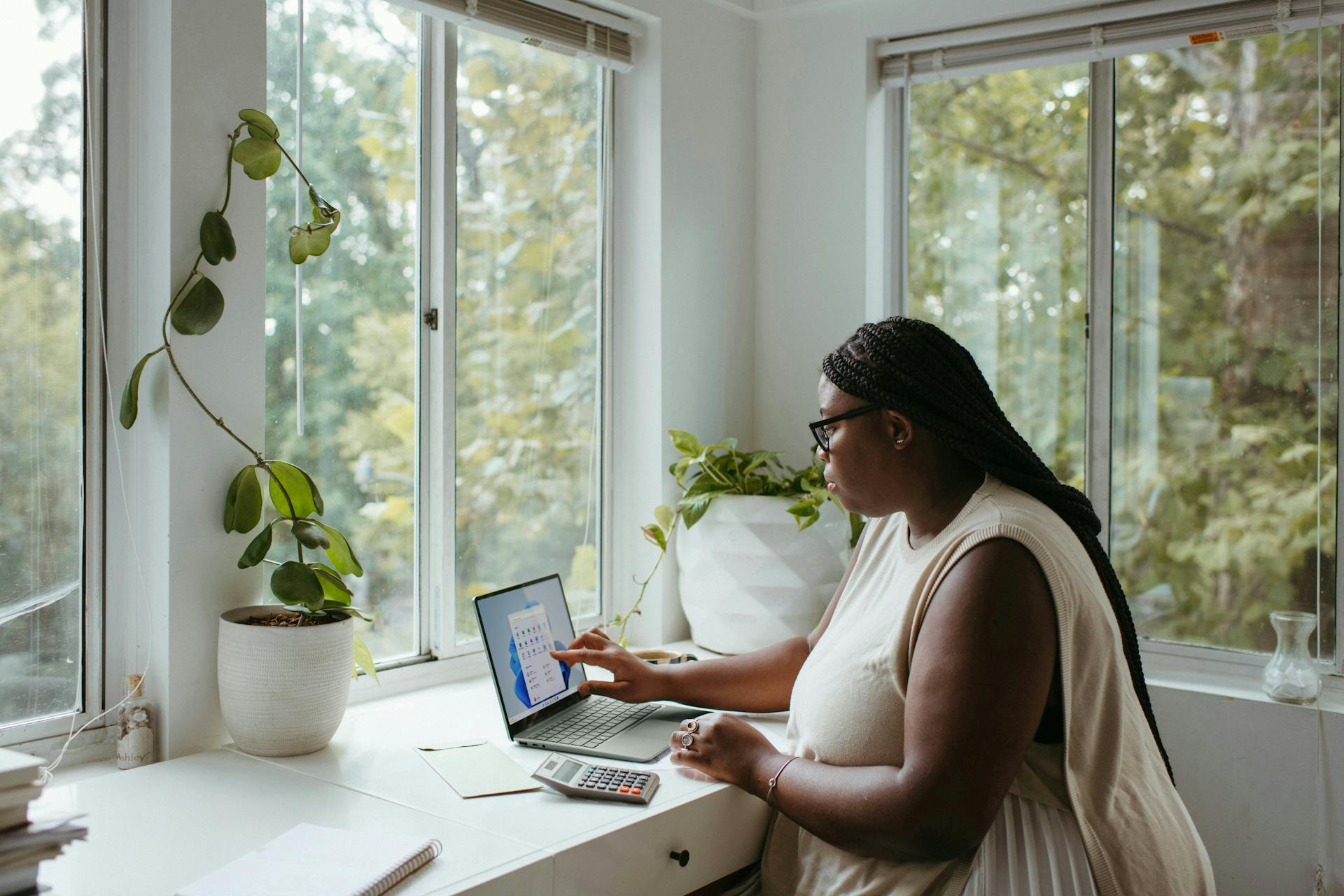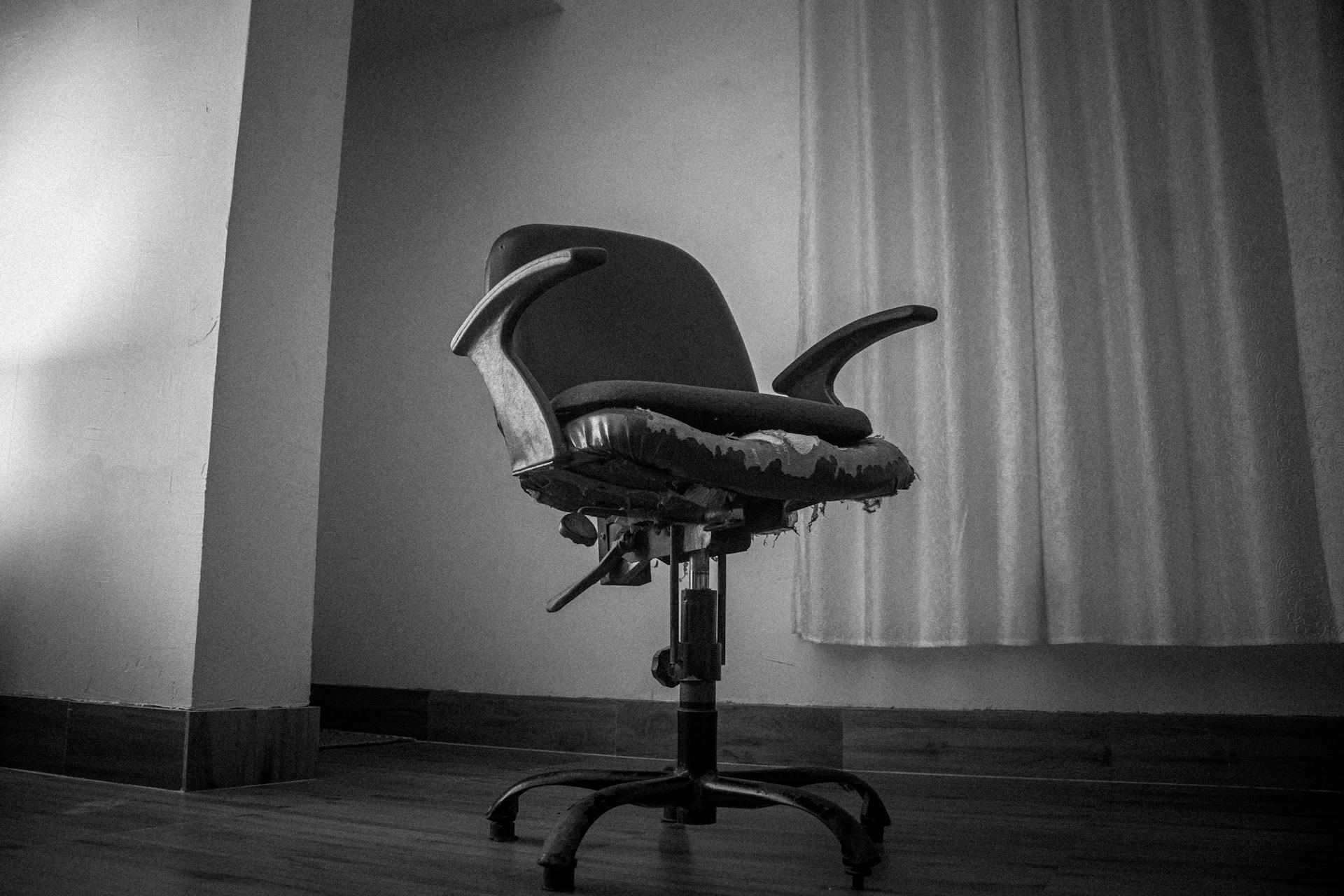7 Home Office Ideas (Top Tips for a More Productive Space)
Find your Smart Storage™ unit.
We have locations across the United States providing onsite StoreEase Virtual Customer Service™ and 2 Minute Move In® contactless rental.
We have locations across the United States providing onsite StoreEase Virtual Customer Service™ and 2 Minute Move In® contactless rental.


The shift to remote work has fundamentally changed how we think about our home workspaces. What was once a temporary solution has become a critical part of our daily professional lives. Now it is time to make that space work harder for you.
Creating a truly productive home office is not complicated, but it does require attention to detail. The small adjustments often deliver the biggest productivity boosts. A properly positioned monitor, a chair that actually supports your spine, or task lighting that prevents eye strain – these are not luxury upgrades; they are practical solutions that transform your workday.
In this guide, we will explore every aspect of an effective home office setup, from finding the ideal location and ergonomic furniture to optimizing lighting, implementing smart storage solutions, and incorporating elements that boost both productivity and well-being.
The foundation of an effective home office begins with its location. Beyond merely looking good in video calls, natural light serves as a powerful mood enhancer, significantly boosting productivity. Position your workspace to capture this free resource, but be strategic about the arrangement to avoid screen glare that kills efficiency.
A dedicated workspace, separated from your home's busy areas, does more than provide quiet. It creates those crucial mental boundaries between work and personal life. Even in smaller homes where space is tight, establishing a consistent work area – however modest – helps your brain shift into professional mode more quickly than when you're constantly switching between temporary setups.
Before settling on your spot, map out access to electrical outlets, and check your WiFi signal strength. Nothing disrupts workflow like a laptop running out of power or a video call freezing at a crucial moment. Pay equal attention to noise levels; what seems like a minor background sound during a quick assessment can become a major irritant during focused work or important virtual meetings.
At the heart of every productive home office sits a proper chair, quite literally. However, comfort extends beyond plush cushioning. A truly ergonomic chair provides strategic support that maintains proper posture throughout your workday, preventing the fatigue that derails productivity.
The geometry of comfort follows clear principles. Your feet should rest flat on the floor, with your knees forming a 90-degree angle. When this position cannot be achieved through chair adjustment alone, a footrest becomes essential rather than optional. Your armrests should allow your elbows to rest naturally, keeping shoulders relaxed and wrists aligned while typing.
Your choice of chair material matters too. Mesh backs offer superior breathability, ideal for warmer climates, longer sitting sessions, or high-quality fabric or leather options might provide better comfort in cooler environments. The key is even weight distribution across the seat, promoting proper circulation that helps maintain focus during extended work periods.
Working within budget constraints? Do not overlook ergonomic accessories. A well-chosen lumbar cushion, seat pad, or can dramatically improve the comfort of an existing chair. While these solutions might not offer all the benefits of a premium ergonomic chair, they can provide significant improvement while you save for a more permanent solution.
Your desk deserves meticulous attention; it is where the actual work happens. The height should position your forearms parallel to the floor while typing, creating a natural, unstrained position you can maintain for hours. This simple adjustment prevents a host of potential repetitive stress injuries that can sideline your productivity.
For those spending hours in front of screens, monitor positioning becomes particularly important. Place your screen at arm's length, with the top edge at or slightly below eye level. This prevents the forward head tilt that leads to neck strain, headaches, and fatigue. For those embracing modern workstyles, adjustable standing desks offer the freedom to shift positions throughout the day, combating the health risks of prolonged sitting.
The battle against clutter requires intentional planning. Your desk should accommodate essential equipment while maintaining clear spaces that allow your mind to focus without visual distraction. Do not overlook stability. A wobbly desk transforms simple tasks into frustrating challenges, potentially puts your expensive equipment at risk, and diminishes your productivity.
Proper lighting impacts productivity far beyond basic visibility. Overhead lighting, while common, often creates problematic glare on screens and casts harsh shadows that strain your eyes. Instead, opt for adjustable task lighting that illuminates your work surface directly, complementing rather than competing with your screen's output.
Position monitors perpendicular to windows to harness daylight's benefits while avoiding direct glare. Consider how your lighting needs shift throughout the day. Tasks requiring intense focus might benefit from cooler, more energizing light, while creative work often flows better under warmer tones that promote relaxation and free thinking.
Take control of your lighting environment with adjustable window treatments. Quality blinds or curtains act as light filters, protecting you from harsh afternoon sun while maintaining the connection to the outside world that prevents feeling isolated during long workdays. This small investment pays dividends in comfort and productivity.
In confined home office spaces, vertical thinking becomes your ally. Wall-mounted shelves and hanging organizers expand your storage capacity without sacrificing precious floor space. This approach keeps essential items visible and accessible while maintaining a clean, professional workspace.
The paper chase requires systematic management. Establish clear protocols for handling physical documents, with designated spaces for processing incoming materials and organizing completed work. In our increasingly digital world, cloud storage solutions offer elegant alternatives to physical filing systems. While reducing physical clutter, these services ensure your documents remain accessible from any device, anywhere.
Consider the frequency of use when organizing your space. Items you reach for daily should live within arm's reach, while less frequently needed supplies can occupy more distant storage spaces. This thoughtful arrangement optimizes your workflow, reducing the small interruptions that fragment your focus throughout the day.
The modern workspace runs on connectivity, but the resulting cable chaos can undermine both functionality and aesthetics. Strategic cable management using cord clips, sleeves, and under-desk trays transforms tangled messes into organized systems that maintain professional appearances during video calls and eliminate the frustration of hunting for specific cables.
Power management deserves equal attention, particularly in homes not designed for today's technology demands. A dedicated charging station keeps devices ready while preventing the potential hazards of overloaded circuits. The strategic placement of wireless equipment ensures consistent connectivity throughout your workspace, eliminating the productivity-killing frustration of unreliable internet connections during crucial tasks.
The psychology of workspace design shows that personal touches serve more than decorative purposes. Thoughtfully chosen items, whether family photos, inspiring artwork, or meaningful mementos, create an emotional connection to your workspace that reduces stress and reinforces your sense of purpose throughout the workday.
Color plays a subtle but significant role in workspace psychology. Blues and greens promote focus and calm, making them excellent choices for main color schemes. Strategic accents of brighter colors like yellow can inject energy into specific areas without overwhelming the space. However, balance remains crucial; too many personal items, excessive decoration, or visual noise can undermine concentration.
Small, intentional improvements to your home office environment can yield remarkable transformations in your daily work experience. Each adjustment, from ergonomic upgrades to thoughtful organization systems, contributes to a more sustainable and enjoyable lifestyle for remote workers.
Ready to create your ideal productive workspace? Partner with us at Store Ease today for personalized guidance in optimizing your home office setup. Our expertise can help you navigate the choices, and changes that will improve your remote work experience.